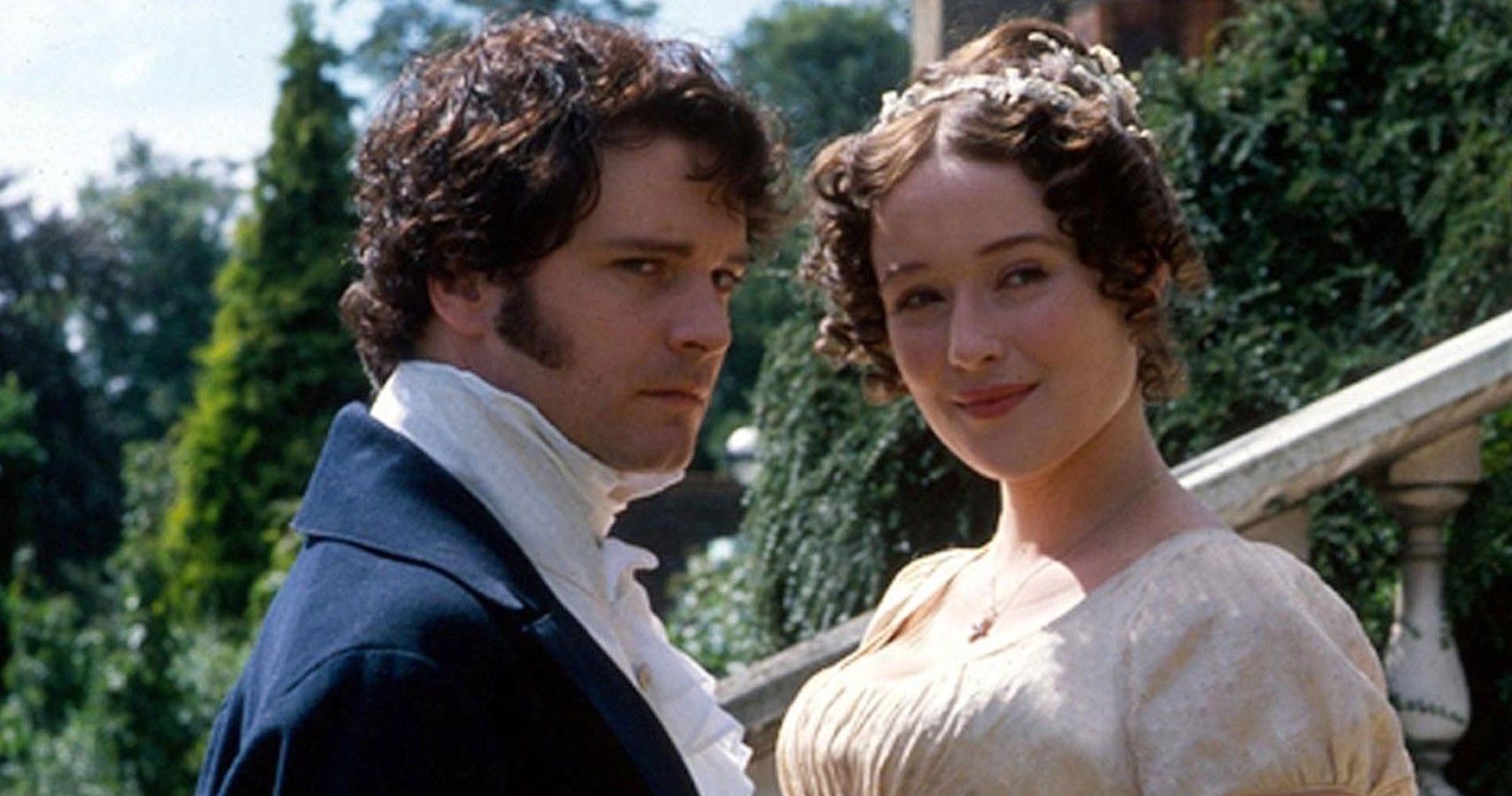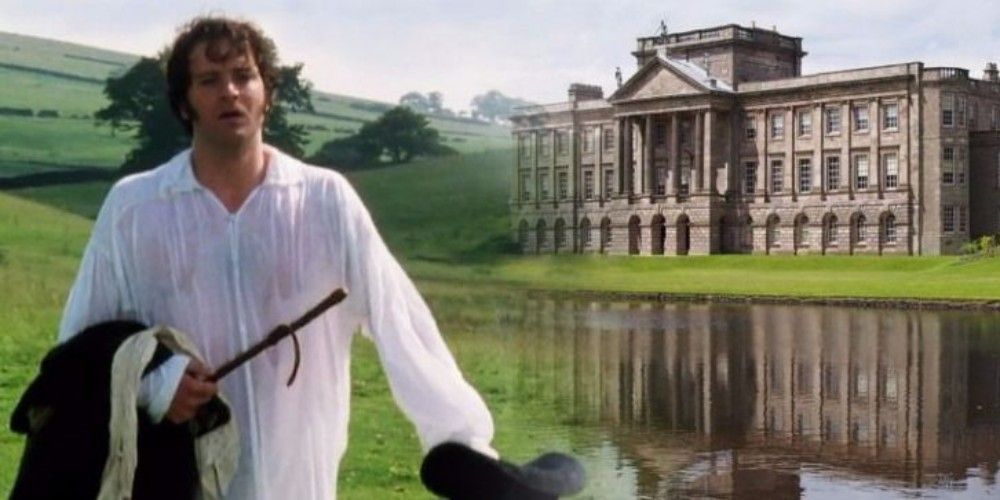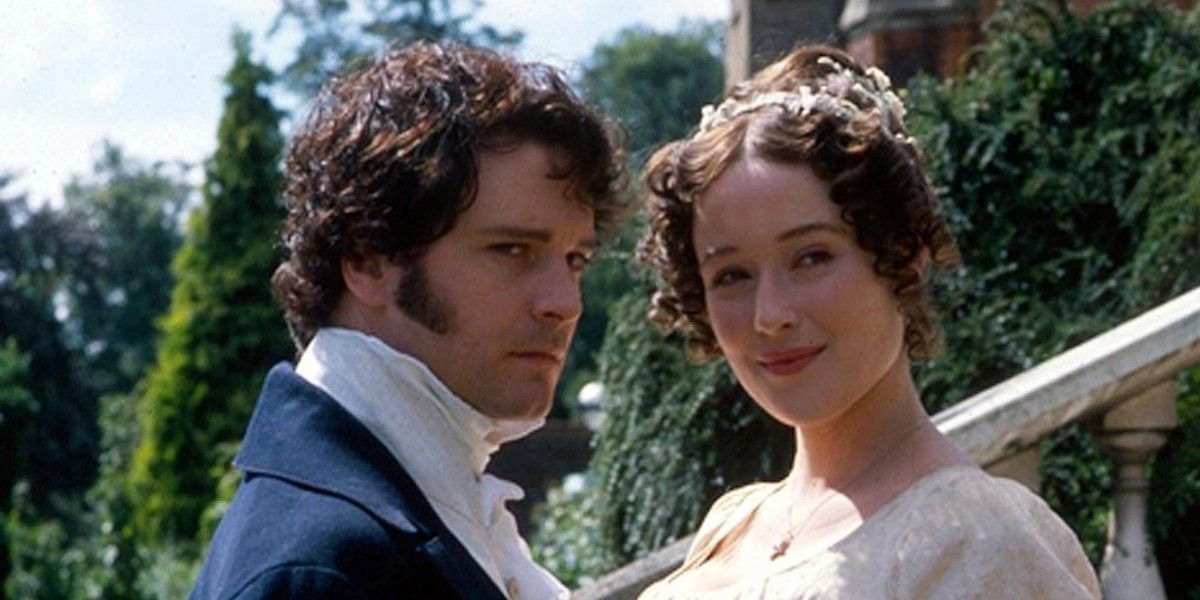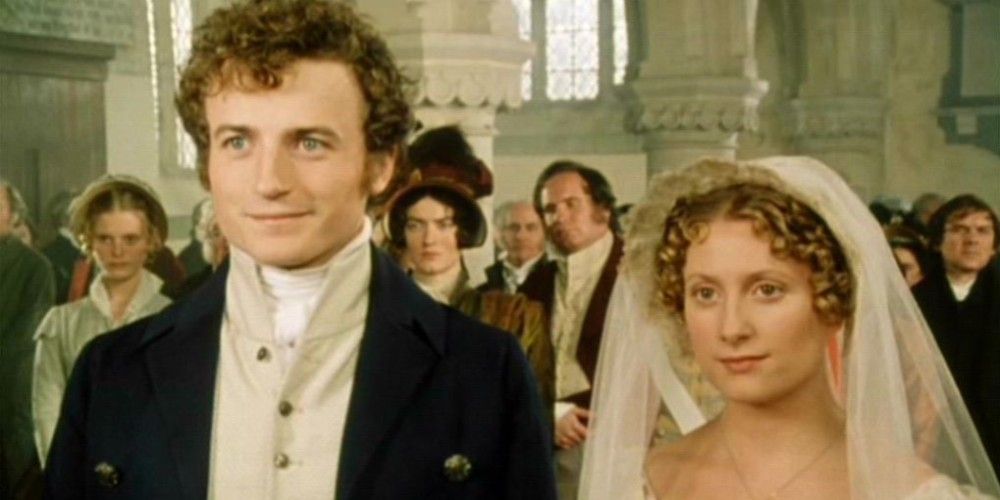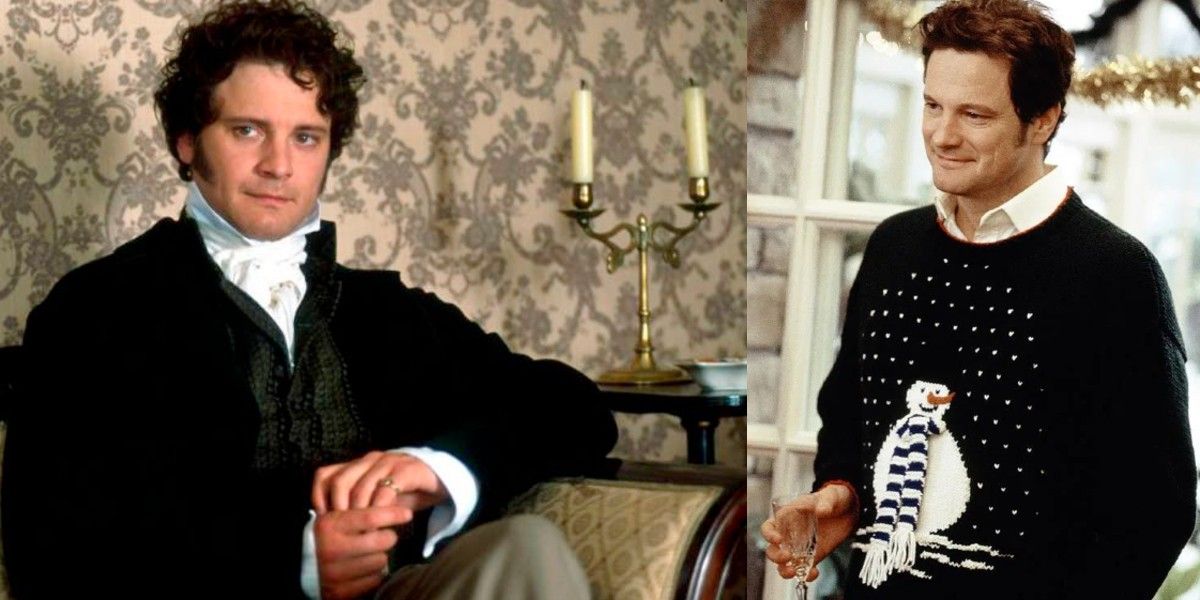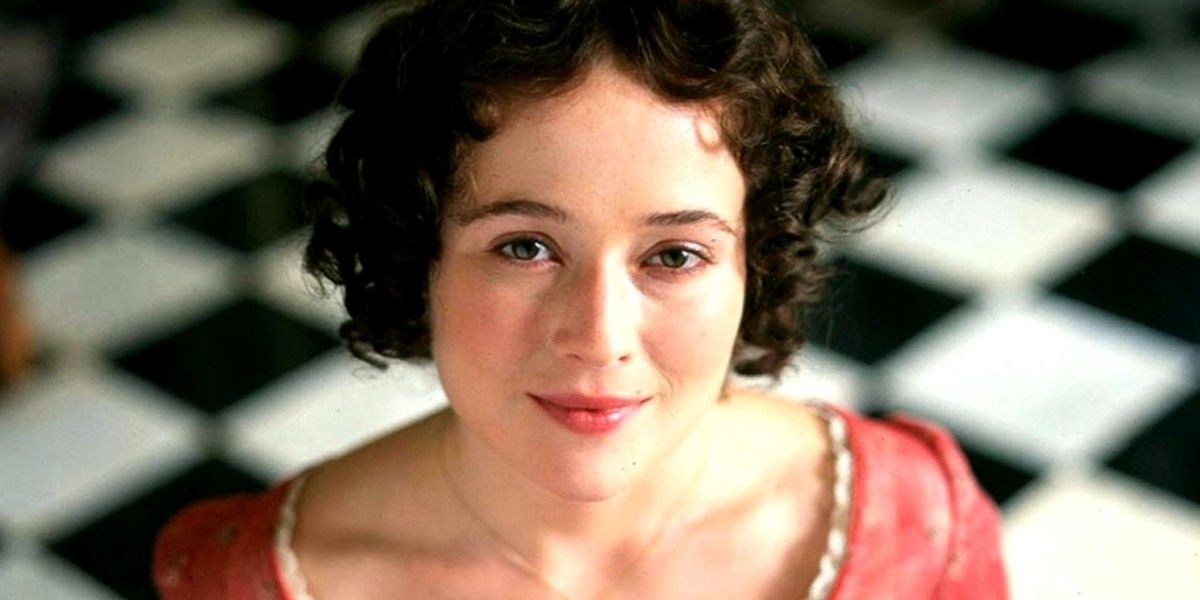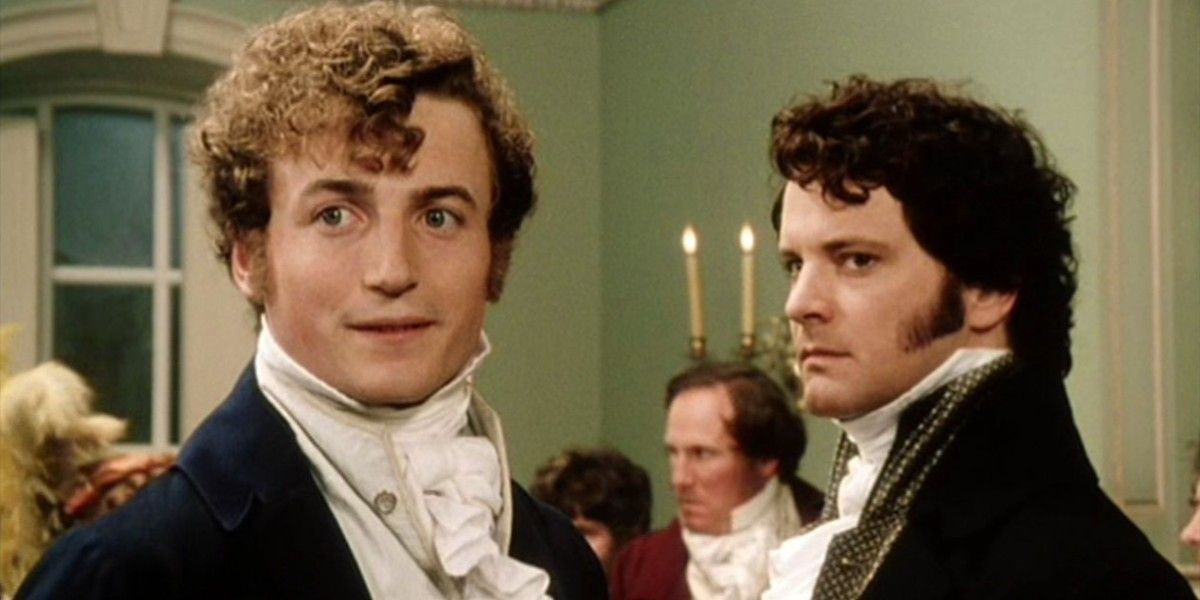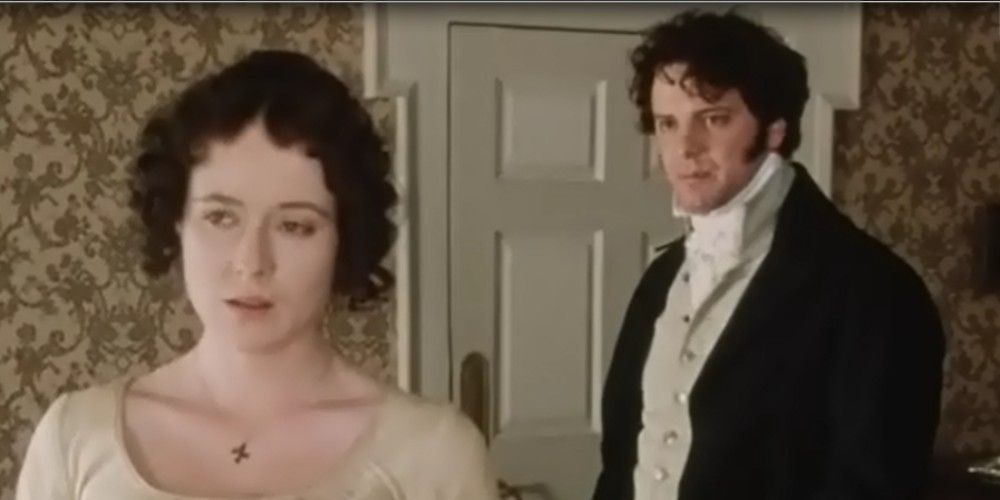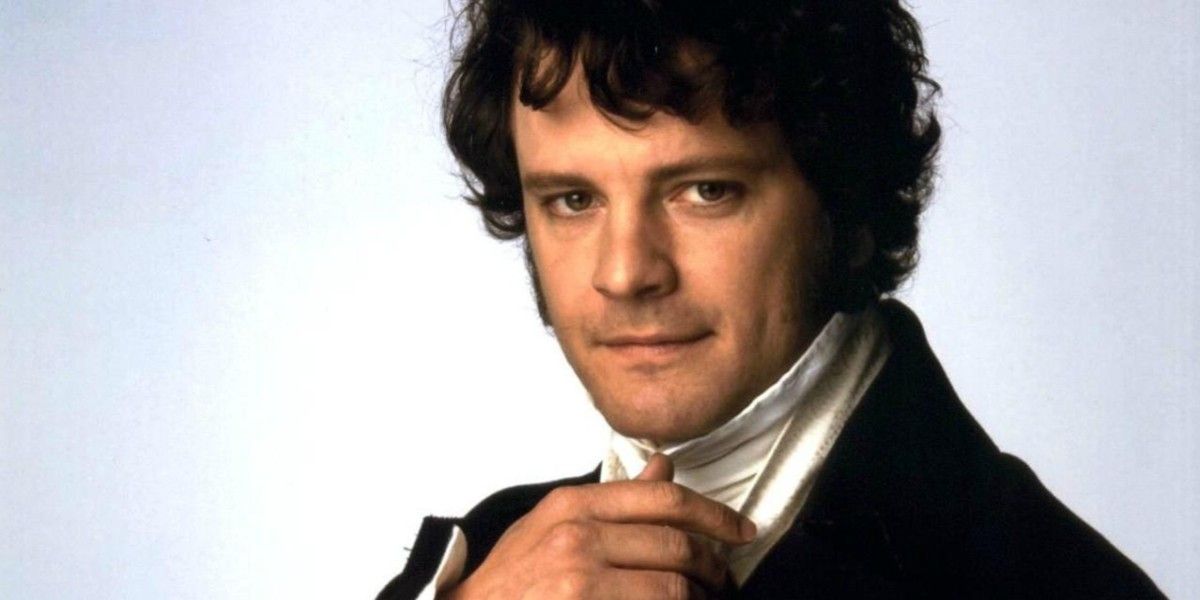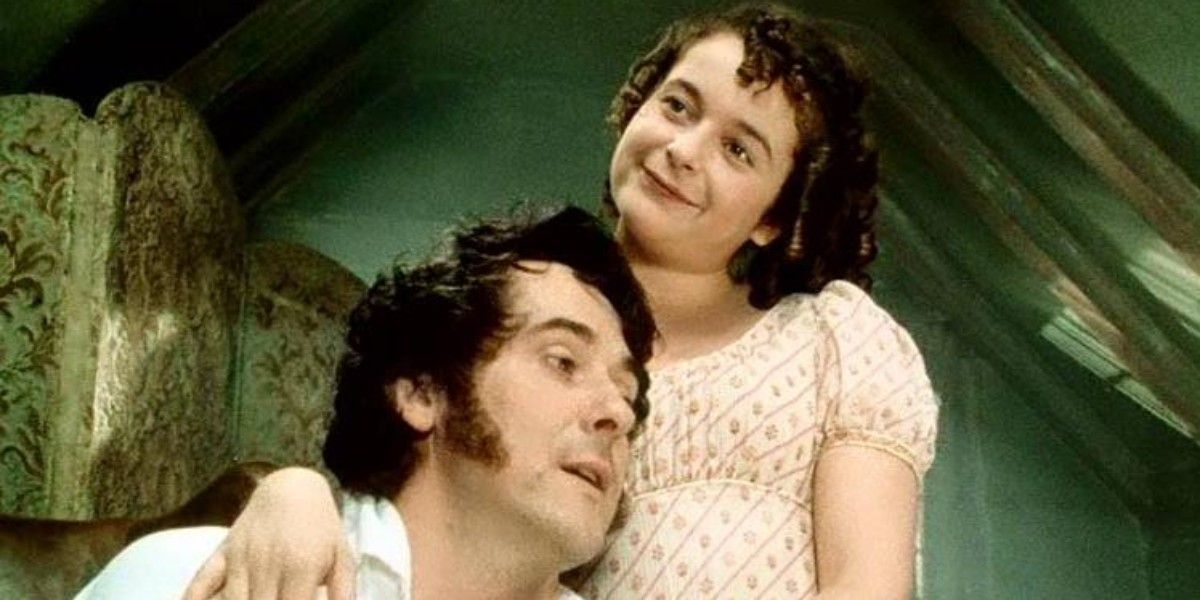Before the world was collectively falling under the spell of Downton Abbey, another mini-series had audiences swooning over period costumes, incontrovertible storytelling, and pithy dialogue. It was the 1995 BBC adaptation of Jane Austen's Pride & Prejudice, about a headstrong country girl and the aloof aristocratic gentleman that falls in love with her.
It has been widely regarded as the moment Colin Firth became a global phenomenon as Mr. Darcy, bringing life to one of the most famous characters in all of literature. He goes toe-to-toe with Jennifer Ehle as Elizabeth Bennet, one of literature's greatest heroines, over matters of birthright, class, and economic status. Only after they explore their understandings of "pride" and "prejudice" can they be together in this 19th century masterpiece. Below are 10 hidden details everyone completely missed about the wildly popular production.
The Lake Scene Wasn't In The Book
As strident as the scene where Colin Firth emerges from the lakes at Pemberley is, his ruffled shirt plastered to his chest and pantaloons dripping, it never appeared in the book. It would have been altogether too salacious a scene for Austen to write about.
Screenwriter Andrew Davies wasn't even interested in titillating audiences with the scene, he simply wanted to inject the seriousness of the series with a little humor, and pondered what it would be like to have Darcy look ridiculous in all his finery and try to maintain his dignity.
The Romance Was Real
If you thought there was some chemistry boiling beneath the tightly tied cravats on Pride & Prejudice,you'd be correct. And it was all genuine! Over the course of filming the romantic scenes, Colin Firth and Jennifer Ehle became more enamored of one another.
By the time filming wrapped after 12 weeks, they stepped out as a bona-fide romantic couple. Unfortunately, their lovestory wasn't as evergreen as Elizabeth and Darcy's, but they did reappear in a movie together called The King's Speech.
Jane Was Pregnant
Luckily the cut, length, and design of the Elizabethan dresses worn by the women of Jane Austen's time were based off of Grecian dresses. The "empire waistline" considered so fashionable in the early 19th century heavily focused on a woman's chest, with the rest of the garment below the bust free-flowing.
This made hiding Susannah Harker's baby bump possible while she filmed her scenes as Jane Bennet. Incidentally enough, Susannah Harker is the daughter of Polly Adams, who played Jane in the 1967 adaptation of Pride & Prejudice.
Colin Firth Played Two Mr. Darcys
After Pride & Prejudice became a global phenomenon, author and super-fan Helen Fielding began writing what would be a smash hit novel Bridget Jones' Diary, in which she based the character of Mark Darcy off of Colin Firth's portrayal of Fitzwilliam Darcy in the BBC series.
Colin Firth would go on to star in the film adaptation of Fielding's work as Mark Darcy opposite American actress Renee Zellweger, who had to learn to speak with a British accent, just like Jennifer Ehle had to do in the BBC version.
The Costumes Have Been Seen In Other BBC Series
As is common with period series and films, costumes often make repeat appearances. This is due to the time it takes to make the garments of the era, as well as the cost. With that in mind, if a production can get away with it, they'll recycle certain pieces.
For instance, the Spencer jacket and green striped gown that Caroline Bingley wears to Netherfield Hall was also worn by actress Julia Davis at Kellynch Hall in Persuasion (2007), actress Vicki Pepperdine in scenes in the park Vanity Fair (2008), and at a party scene in Byron (2003).
It Was Very Cinematic
One of the reasons the BBC version was such a hit was because it used cinematic parlance to convert televised serial into something much more dramatic. Unlike stuffy BBC productions of the past, where actors stood around. collars buttoned to their noses, making polite conversation, this series had wide open shots, fast cuts, and moving cameras.
It all added to the exciting pacing of the 6-part series, which had none of the baggage of other, dryer versions. And unlike other versions, it would be actually filmed outside, or in historic homes, not on humid sets, and shot in 16mm. Characters were always on the move, which made everything seem more urgent.
Certain Cast Members Were Related To Famous People
When it comes to British actors appearing in a BBC period piece, it can feel like everyone knows each other, since the pool from which to draw from is so relatively small. The same people may appear over and over again, or be related to other famous actors.
Crispin Bonham-Carter, who plays Mr. Bingley, is related to Helena Bonham-Carter, and appeared in Bridget Jones' Diary as an employee of "Pemberley" Press. And Anna Chancellor, who played his sister Caroline Bingley, is Jane Austen's niece by eight generations.
The Proposal Scene Was Filmed First
While viewers might have thought was the result of a slow burn romance building up to a fiery proposal scene, was actually the mark of two talented actors. The first scene that Colin Firth and Jennifer Ehle ever shot together was the infamous scene were Darcy pours his heart out to her and she rejects him.
The two were able to summon so much verve and passion for the scene that it only required two takes! It actually helped them to imbue their roles with more dynamism, riding off the high of that initial success. It's no wonder the actors started dating in real life!
Darcy Gets More Focus Than In The Book
In the novel, though Elizabeth and Darcy's romance is the main focus, much more attention is paid to Lizzy and her perspective than Darcy's. He barely even gets much of a physical description except being aloof, arrogant, and reserved. That's why Andrew Davies thought it was so important to focus on Darcy doing things.
If he couldn't say what he felt because of societal oppression at the time, he could at least be seen horseback riding, fencing, taking baths, remembering his past with Wickham, and fantasizing about Elizabeth to make him come across as a more well rounded, complex character than in the book.
Honeymoon In Vegas
To people of the time period, there were certain things mentioned in the series that would only have made sense to them. For instance, when Mr. Bingley has to "rent Netherfield Hall", that's because his family has only had money for a generation or so, and hasn't inherited an estate of their own.
Also, when Lydia and Wickham elope to Gretna Green in Scotland, that was like saying Vegas in the Regency Era.Everyone knew exactly the sort of debauchery people got up to there, especially since England didn't allow anyone to marry without parental consent if they were under 21.

